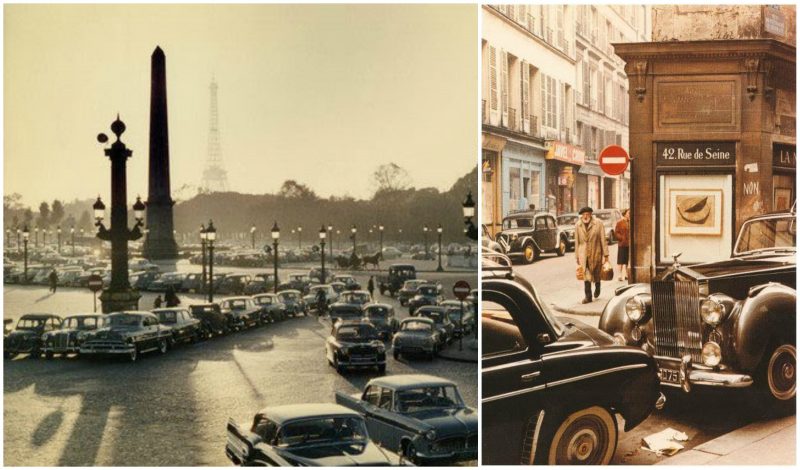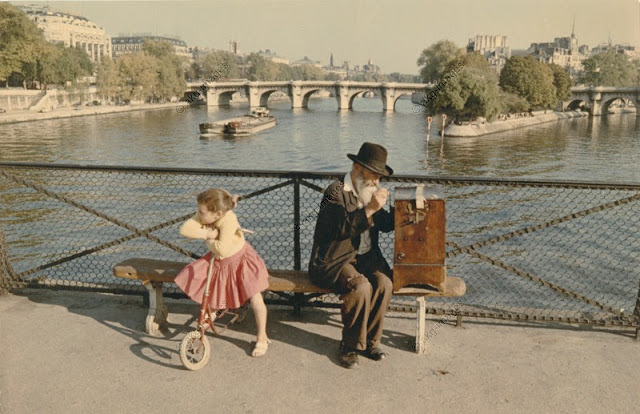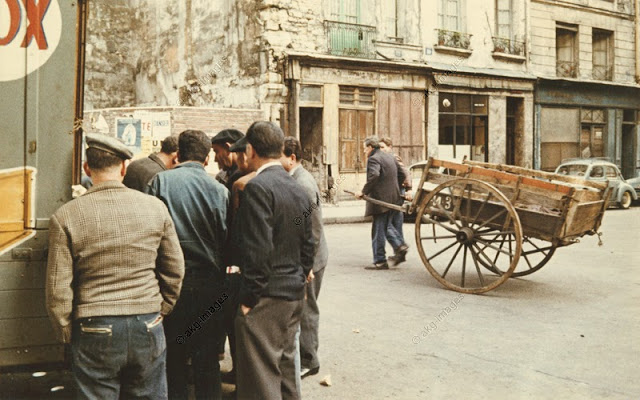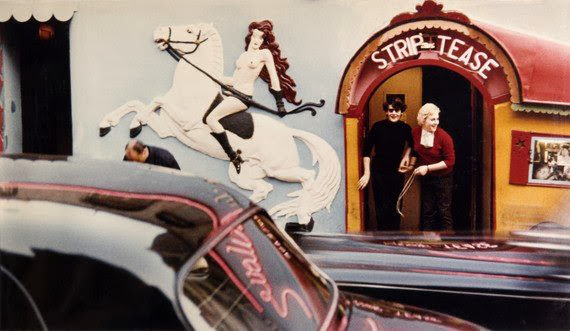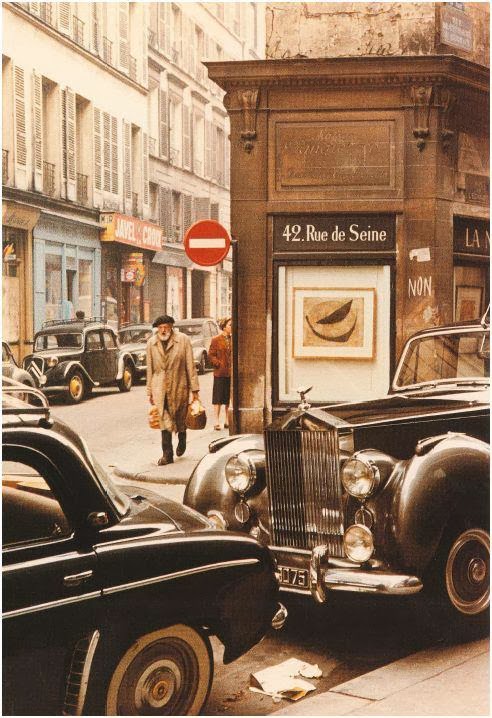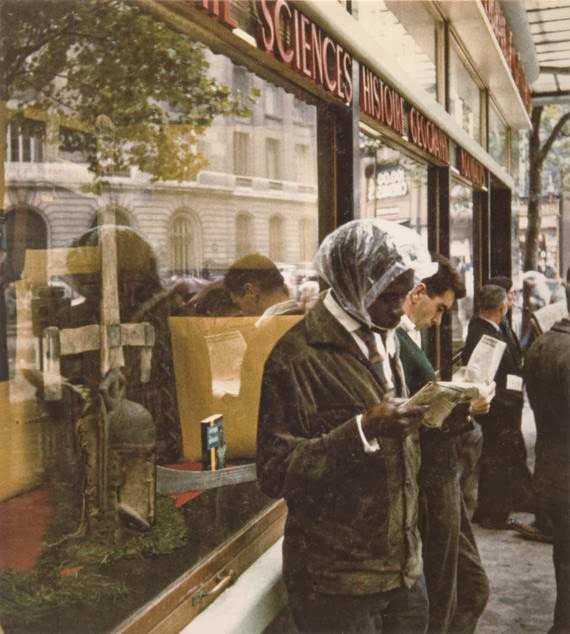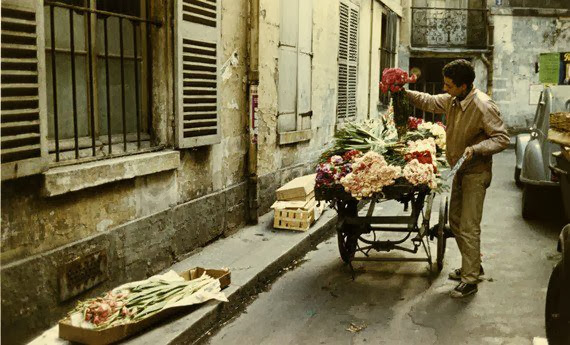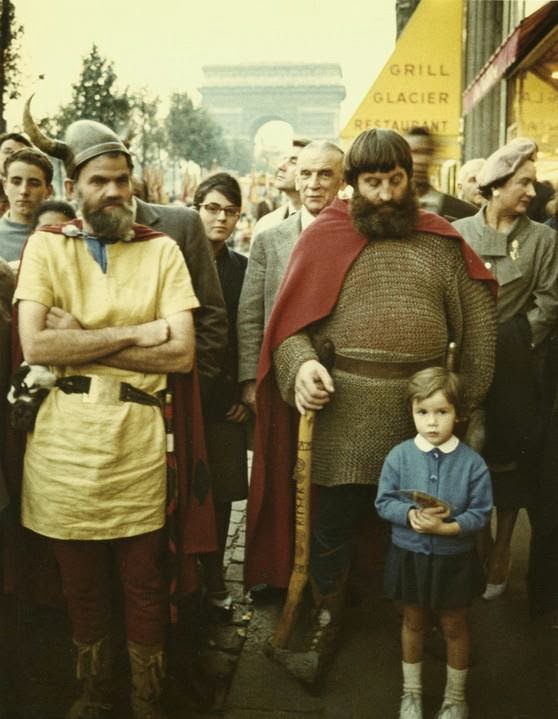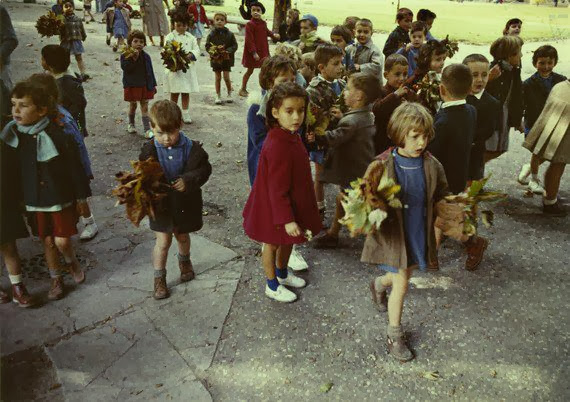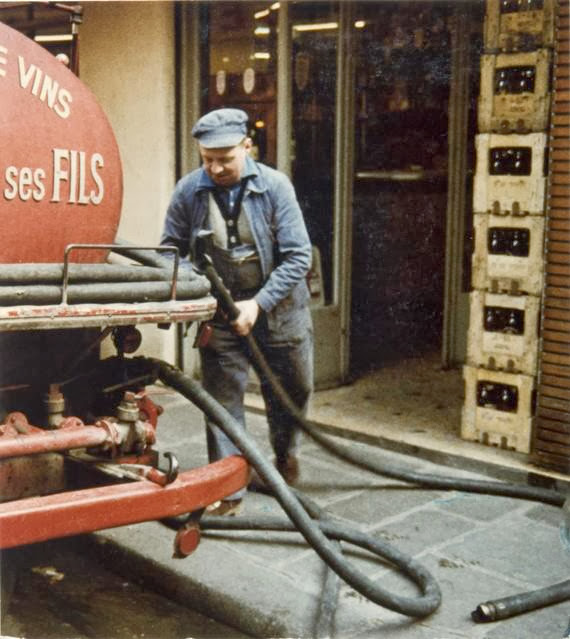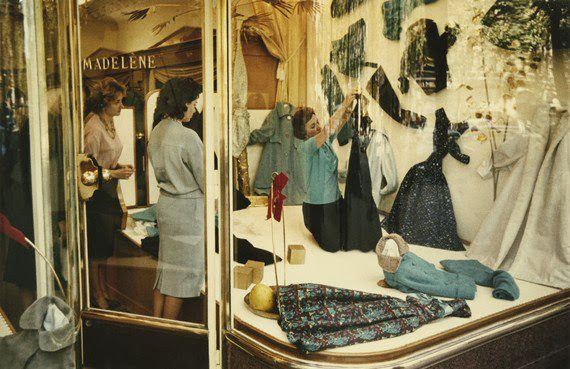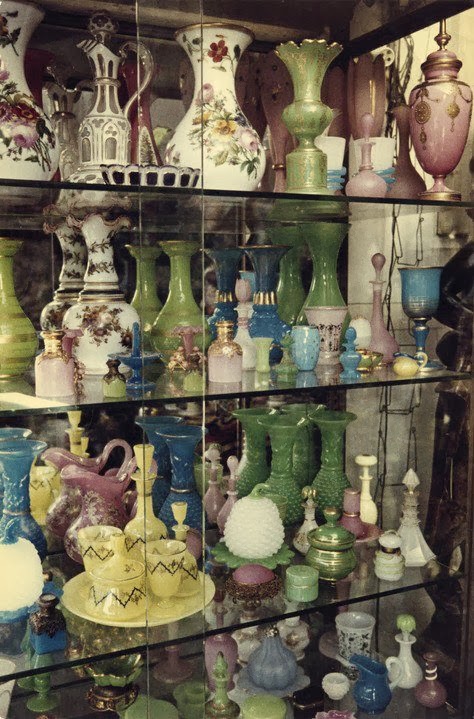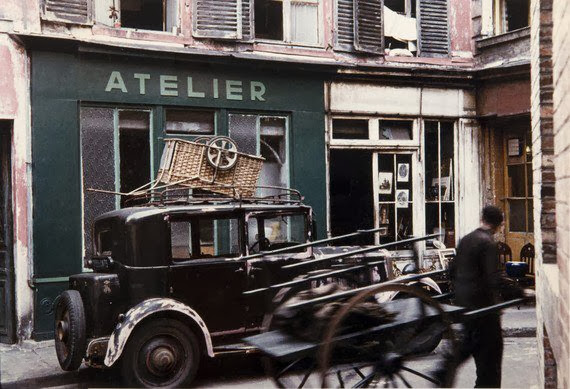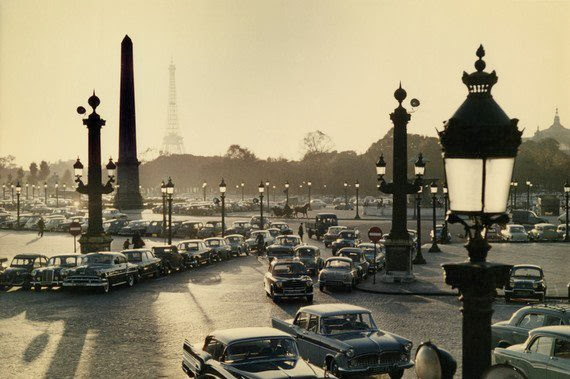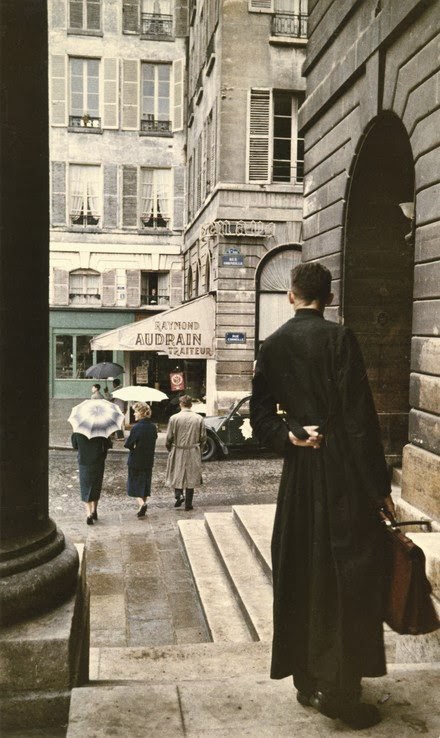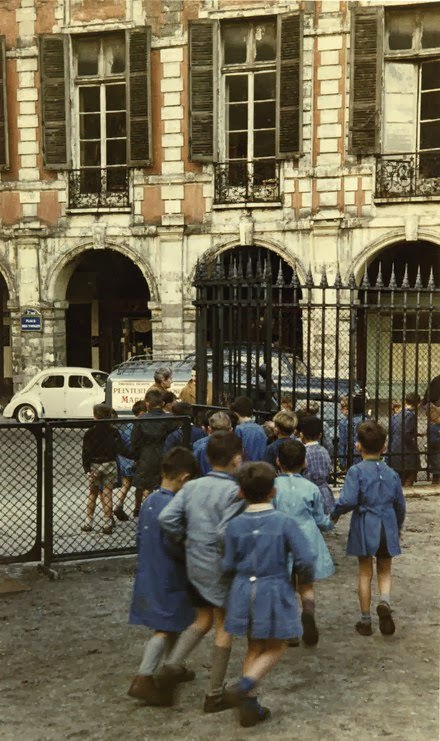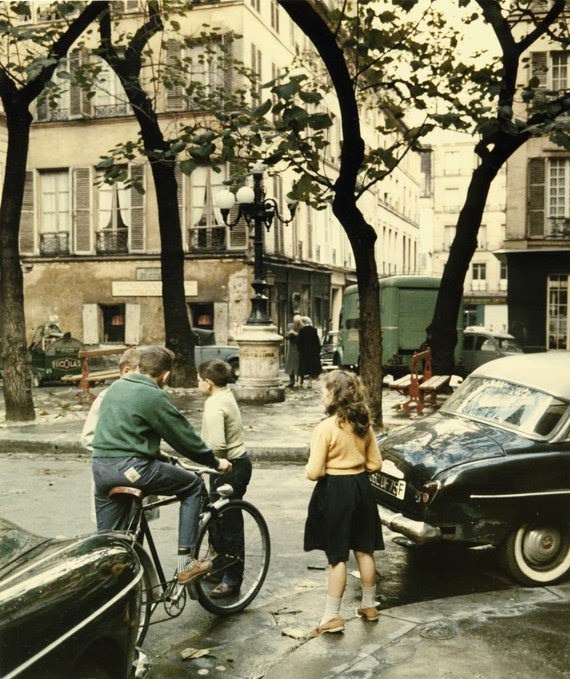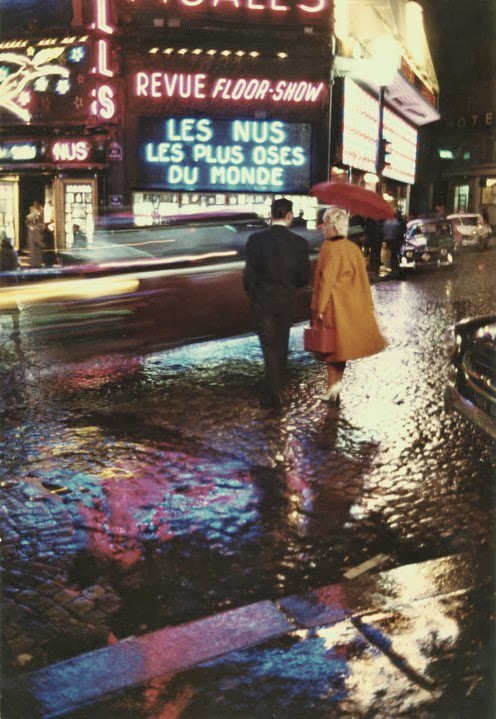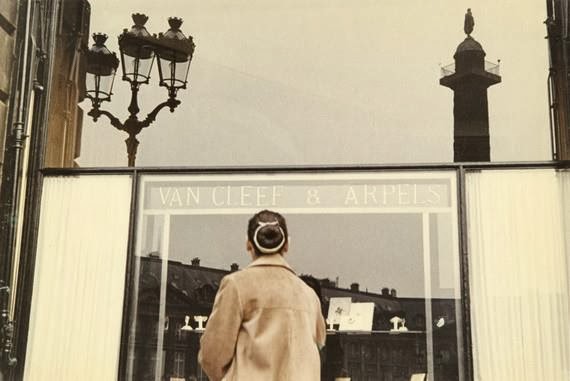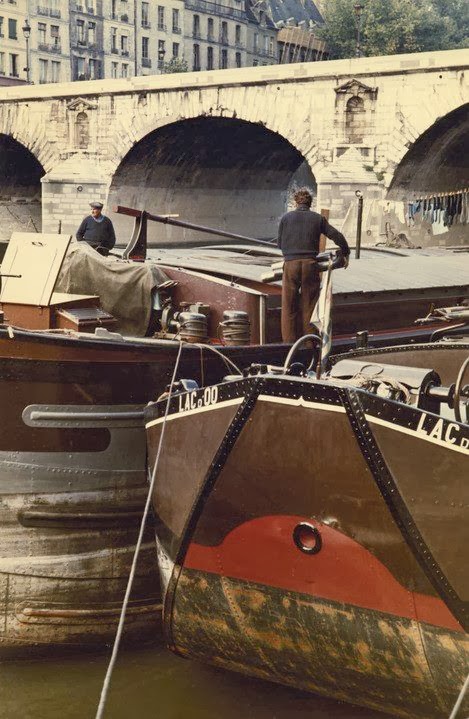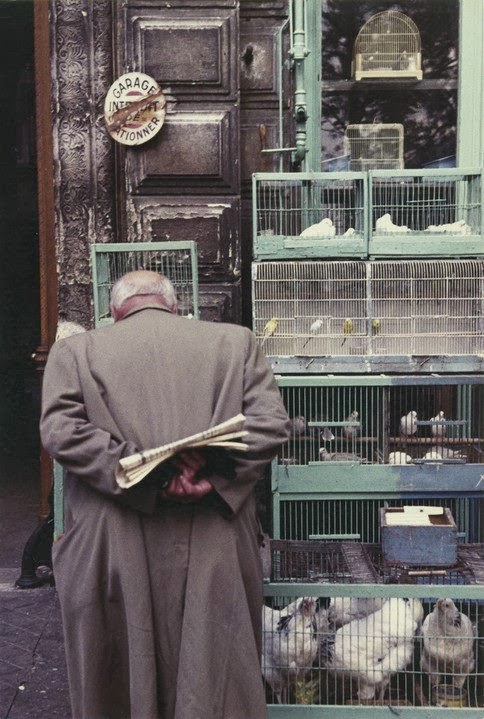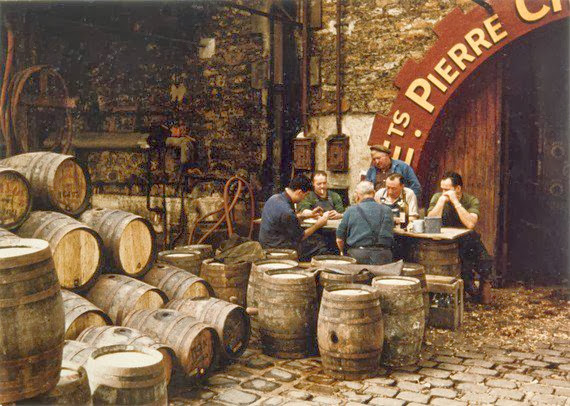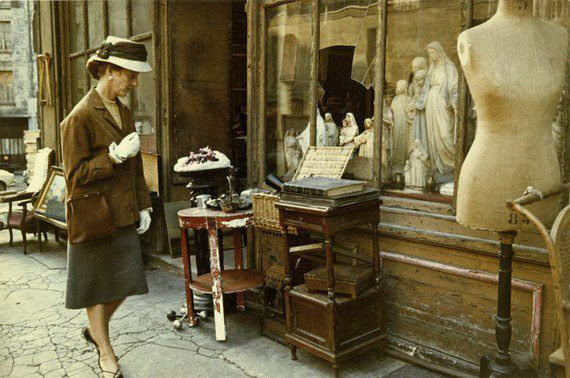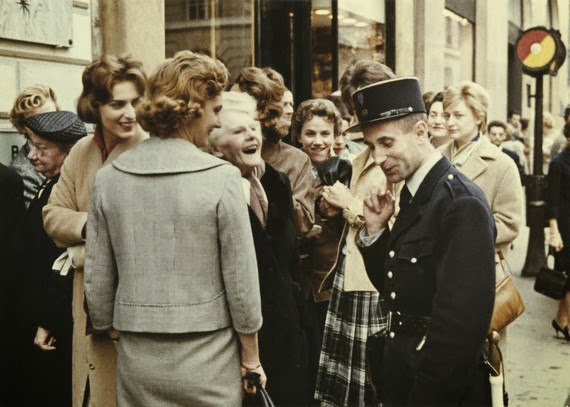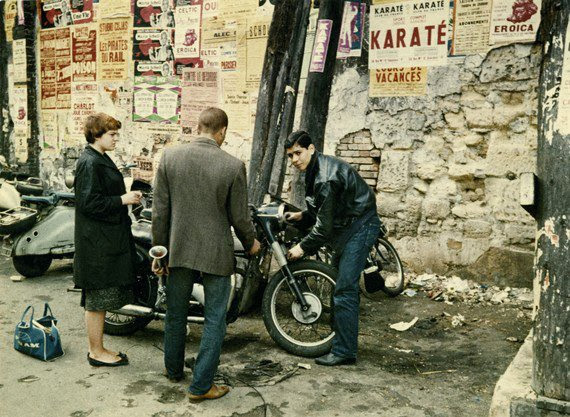The Liberation and the end of the war did not end the hardships of the Parisians. Rationing of bread continued until February 1948, and coffee, cooking oil, sugar and rice were rationed until May 1949. Housing in Paris was old and run-down. In 1954, thirty-five percent of Paris apartment buildings had been built before 1871. Eighty-one percent of Paris apartments did not have their own bathroom, and fifty-five percent did not have their own toilet. It was also expensive and in short supply. In 1950, the government began a new large-scale project to construct apartment blocks for low-income Parisians, called HLMs (habitations à loyers modérés), usually on the edges of the city or in the suburbs.
Check out this amazing photo collection of everyday life in Paris in the 1950s by Peter Cornélius
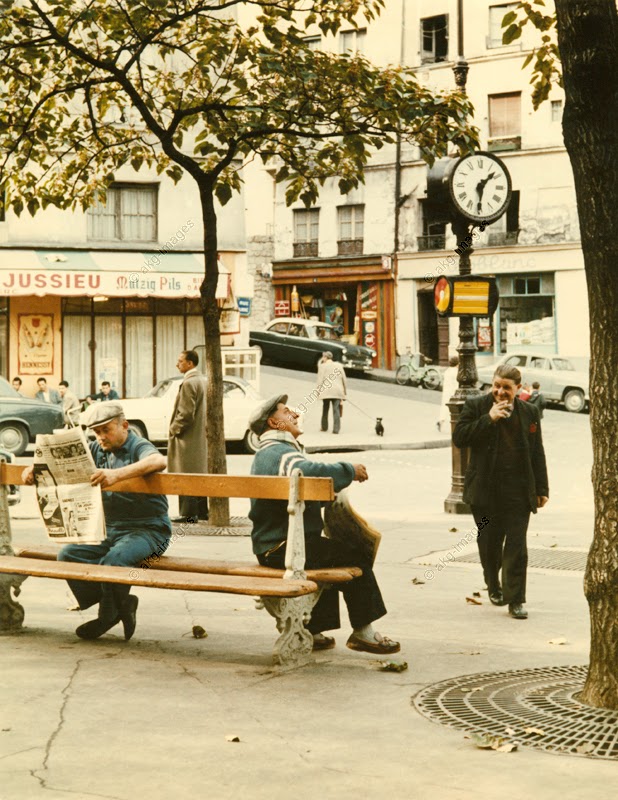
Housing was a particularly daunting problem. The population of Paris grew by about 50,000 persons a year between 1946 and 1954, adding 379,000 residents. However, very little housing had been built in the past twenty-five years to house them. 35 percent of the apartment buildings had been built before 1871. 81 percent of the apartments did not have their own bathroom, and 55 percent did not have their own toilet. 100,000 housing units in the city had been declared unhealthy; 90,000 which had been declared uninhabitable were still occupied. Health was also a major problem, with 100,000 cases of tuberculosis in the city, killing hundreds of persons each year, particularly in the crowded apartment buildings and furnished lodging houses.
In 1950, the government began a new large-scale project to construct apartment blocks for low-income Parisians, after 1950 called HLMs (habitations à loyers modérés, or residences with moderate rents), usually on the edges of the city or in the suburbs. In 1952, some 82,000 new housing units were built in France, but this only covered a fraction of the new homes needed in Paris. A new minister of lodging, Pierre Courant, was named in 1953, and he launched a much larger-scale program of construction. The new buildings were called LOGECOS, or Logements économiques, and they were built largely in the Paris suburbs, where land was cheaper and more available. Prefabricated and mass-produced materials were used, greatly reducing the cost of construction. Money was also saved by building much larger numbers of apartments at the same time in the same location. In the suburban community of Sarcelles, a single project built in 1954 contained 13,000 housing units. These new buildings, to save money, were often far from markets or city centers, and had few facilities or access to public transportation. In the 1950s, they were occupied largely by French-born workers. In the 1960s and 1970s, they became the home of tens of thousands of immigrants.
The cultural life of Paris resumed, this time centered on the cafés of Saint-Germain-des-Prés; the Café de Flore, the Brasserie Lipp and Les Deux Magots, where the philosopher Jean-Paul Sartre and writer Simone de Beauvoir held court, and the night clubs La Rose rouge, and Le Tabou. The musical styles were be-bop and jazz, led by Sydney Bechet and trumpet player Boris Vian. The new Museum of Modern Art of Paris opened in June, 1947 in the old Palais de Tokyo of the 1937 Universal Exposition. Paris designers, led by Christian Dior, made Paris once again the capital of high fashion.
Paris had not had an elected Mayor since the French Revolution. Napoleon Bonaparte and his successors had personally chosen the Prefect to run the city. The law was changed on December 31, 1975 under President Valery Giscard d’Estaing. The first mayoral election in 1977 was won by Jacques Chirac, the former Prime Minister.
All photos by Peter Cornélius
